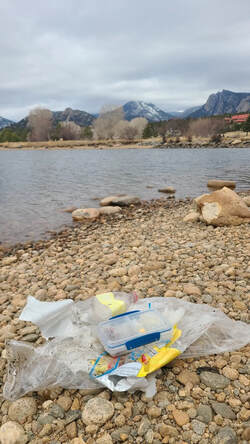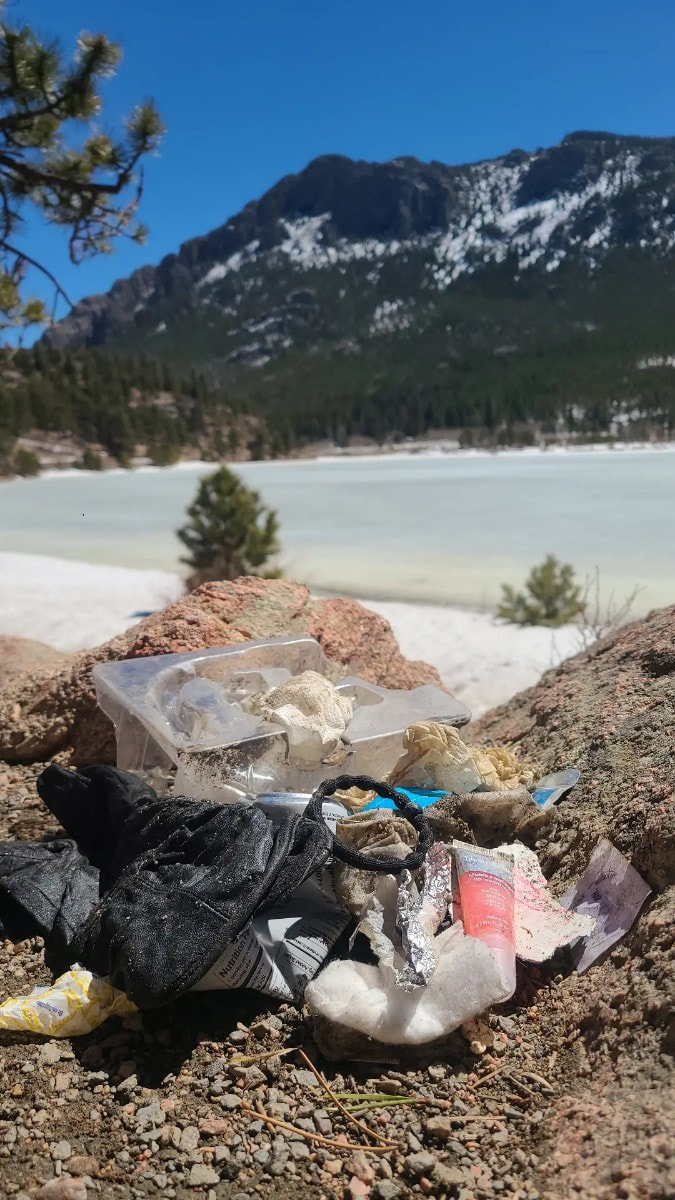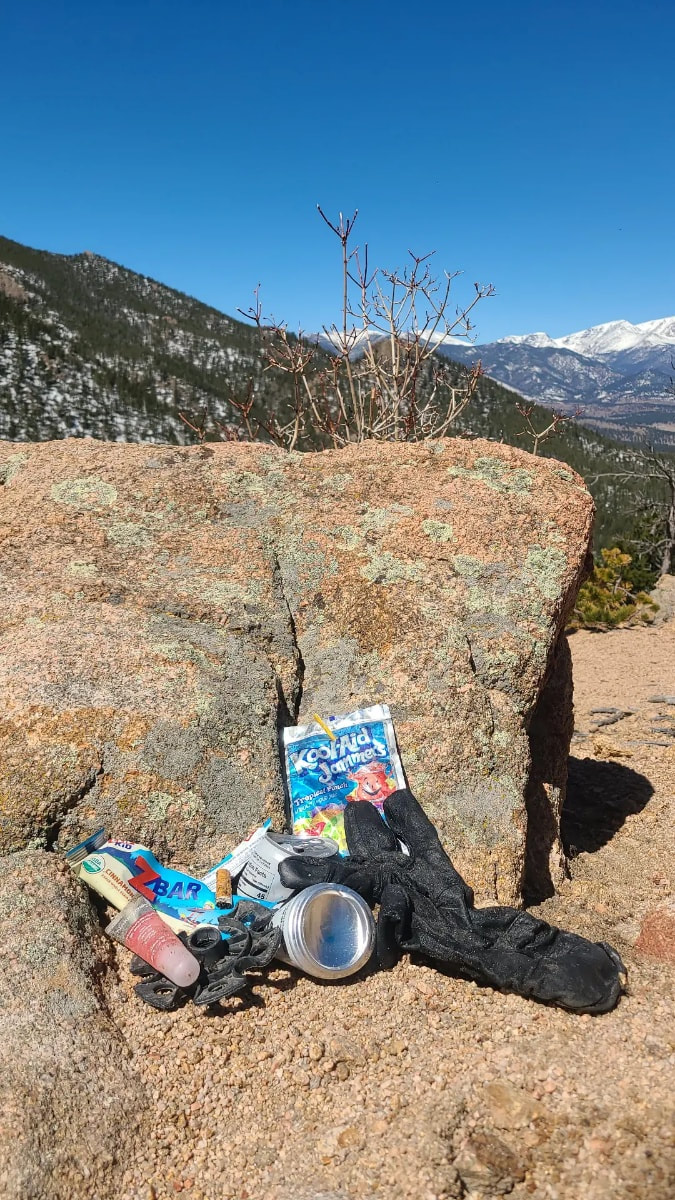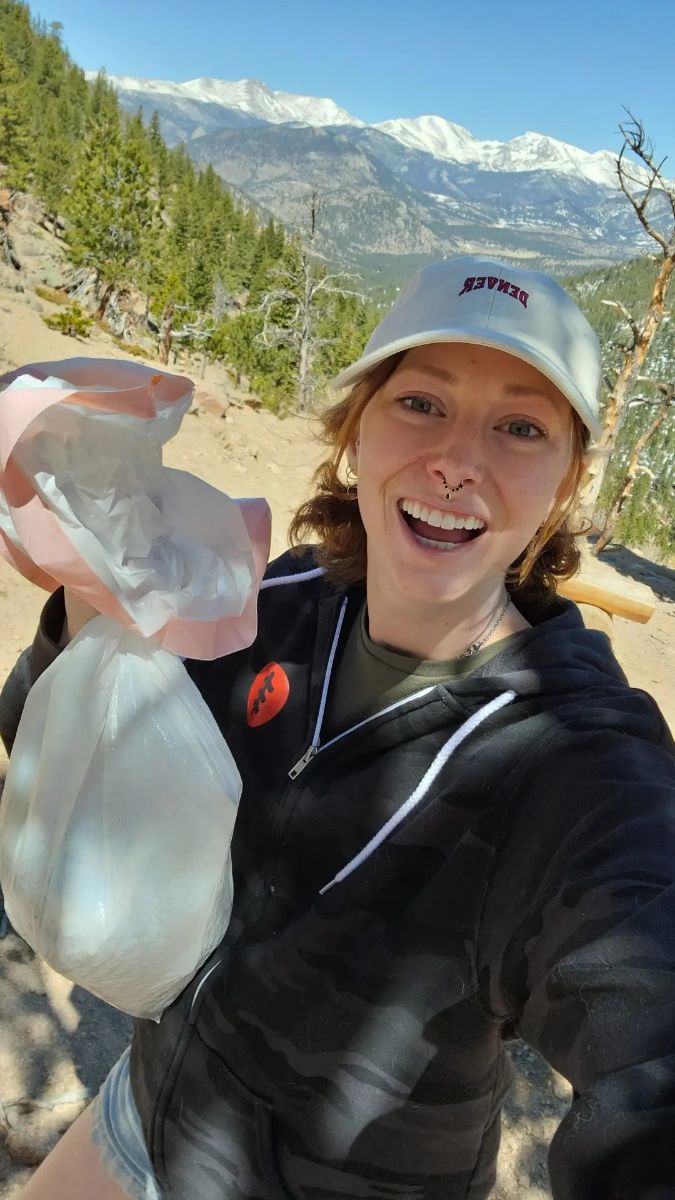|
This story was pulled from the most recent issue of HIKE ROCKY magazine, which published April 30, 2023. For more information click here photos and story by Bronte Brooke As we move out of April, the coming of spring is evident. The change of the season brings life back into the mountains. In town, elk can be seen out and about. Fresh green grass pokes its way through the snow. Birds welcome the morning with song. The mother osprey at Lake Estes teaches her young to fly. People scatter the trails with friends and family. The snow melts and the weather warms, drawing eager admirers into the Rocky Mountains. But the reality of this influx of travelers has a flip side as well. As electric and alive as the wilderness feels with the surge of onlookers, it also leaves more room for mistakes. Last week while enjoying a sunset walk along Lake Estes, I noticed quite a bit of trash washing onto the shore. What started out as a leisurely stroll quickly transformed into an intentional trash cleanup after observing just how much scattered the trail. Then it occurred to me: more people outside means an increased risk for trash to be left behind. Whether it be families on picnics, anglers passing the time or hikers enjoying a snack after a long hike, there is an increased potential for things to be left behind in the outdoors. It's unfortunate, but it happens. I think we're all guilty of it. We stuff a granola bar wrapper into our pocket planning to throw it out later, but the wind grabs hold of it without us noticing. Or we get distracted photographing an elk and forget the cup of coffee we left sitting on the rock beside us. Mistakes happen even if we have the best intentions to clean up after ourselves. I'm hoping this serves as a reminder to make that extra effort to pack it in, pack it out. And if you notice a stray wrapper or broken piece of shoelace, take that extra moment to pick it up. We share this land with numerous different animals. The Rockies contain large herds of elk, a variety of birds, squirrels, chipmunks, deer and many other creatures. It's our responsibility to help protect this beautiful place they all call home. After what I saw on my walk around Lake Estes, I decided it was time to implement a change. In order to help maintain this Colorado oasis I've grown so fond of I've started integrating a new routine into my weekly schedule: trash cleanup walks. You can easily do this while already out hiking or plan a separate trip for it. Some things to consider bringing:
A quaint path circles the lake for a quick scenic stroll, but if you're looking for something slightly more challenging, Lily Ridge includes some more steep and rocky terrain. There are also a handful of other trails that can be accessed from the same trailhead, such as the Estes Cone for those seeking a real calf burner. But since the purpose of my hike was to cleanup trash in the park, I stuck with the more populated trails – Lily Lake and Lily Ridge. As I walked along, trash bag in hand, several people noticed my efforts and thanked me. It made my walk much more enjoyable, knowing I was doing something good for the planet and helping to maintain one of my favorite spots in Colorado. Trash items found on my walks: Lily Lake: Cigarette butts, granola bar wrappers, juice boxes, crushed cans, cough drop wrappers, chapstick, hair ties, used toilet paper, gum wrappers, chewed up gum, an old glove, disposable hand warmers, coffee cups and a children's shoe Lake Estes: A full tackle box, fishing line, chip bags, cigarette butts, Styrofoam, bait, pop bottles, pieces of plastic, candy wrappers, plastic water bottles and pieces of fabric amongst many other random scraps.  Trash items picked up around Lake Estes Trash items picked up around Lake Estes I think the hardest part about finding so much trash in the Park is knowing the negative affects it has on the local wildlife and our planet as a whole. I often see ducks at the lake with fishing line wrapped around their legs, wings or beaks. And as much as I'd love to help untangle it from their bodies, realistically it's nearly impossible to get close enough to do so. Birds and squirrels mistake trash such as gum or cigarette butts as food and get sick. Plastic items take decades to decompose, and frankly it draws away from the beauty of this amazing landscape. I was honestly shocked at some of the items I found, which is why I recommend bringing gloves or hand sanitizer on your cleanup walks; you never know what you'll stumble across. The amount of used toilet paper that I found at Lily Lake was truly atrocious, especially taking into account the fact that there are pit toilets at the trailhead parking lot, as well as numerous trash cans that can be found along the trail. Another item that stood out to me was the tub of bait at Lake Estes. I was about to throw it out when I noticed it was quite heavy and still felt rather full. Upon opening it up, I realized there were several live worms still inside. Seeing as the tub clarified they were local worms I found a soft patch of dirt and released them. The full tackle box also caught my attention. It had lures, hooks, and spare fishing line inside, perfectly intact. I hesitated to throw this item out, all still perfectly fine and usable. Instead, I sat it on top of the trashcan for another angler to find and utilize. That felt like the better choice instead of tossing it into the landfill to waste away and take years to decompose. I point these items out as an example of the things you'll stumble across, but also as an encouragement to take the extra step in thinking about how you dispose of the trash you find on your walks. Are there objects that could be recycled or composted? These are some of the things to consider. Maybe bring two bags with you; one for trash and another for recyclable items. Whether you implement intentional trash walks into your routine like I did, pick up items found while hiking or become more conscientious about packing it in and packing it out I hope this serves as a reminder to care for this wonderful planet we share. Have fun while doing it. Get out there! Bronte Brooke is an outdoor enthusiast, nature lover and adventure seeker. She’s spent the past two years living nomadically and traveling the states in her self-converted campervan with her two cats, Piper and Sotba. She unexpectedly found myself in Colorado this summer and haven't left since. Bronte is originally from the Pacific Northwest so she naturally fell in love with Colorado's landscape and the sense of "home" it's brought her. “The people I've met and the community I've built are what makes this place special to me,” said Bronte. The following business partners sponsored the publicaiton of this original content from HIKE ROCKY magazine: New Roots Real Estate, the Bank of Estes Park and Brownfield's
0 Comments
Leave a Reply. |
Categories
All
|
© Copyright 2025 Barefoot Publications, All Rights Reserved







